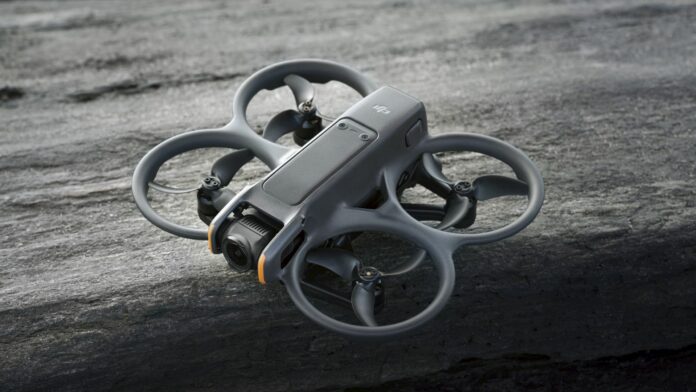- Leaked promotional images suggest that the DJI Avata 360 is about to hit the market
- This could be DJI’s first 360-degree drone
- It is said to have the dual 1.1-inch sensors of the Osmo 360.
The first contact with Insta360’s Antigravity A1 drone took place about six months ago, well before the official presentation in August. This innovative 360-degree drone has proven impressive and even hints at potential market disruption. Therefore, the next step seemed obvious: DJI would not be left without an answer and would develop its own version.
DJI has since launched its first 360-degree action camera, the Osmo 360, making the development of a similar drone almost inevitable. Now, high-resolution promotional images of a certain Avata 360 have been leaked online, shared by the famous leaker. @Quadro_Noticias to X, indicating that launch is imminent.
page the new camera There is even talk of a possible launch in 2025, that is, in the coming weeks. In this case, DJI may redesign the Antigravity A1, scheduled for January 2026.
DJI has always been able to respond quickly to competitors, such as the Neo, a selfie drone designed in response to HoverAir’s X1 (and quickly replaced by the Neo 2). This time, DJI even beat Insta360 by a wide margin with the early launch of its 360-degree drone, although the Insta360 announcement came much earlier.
Hello little DJI Avata 360! #avata360 pic.twitter.com/XcNApLza5xNovember 10, 2025
What will DJI Avata 360 look like?
It’s no secret: the Antigravity A1 leans heavily on Insta360’s advanced 360-degree camera, the X5, and packs it into a body that weighs less than 250 grams. The result: immersive 8K video and intelligent subject tracking.
According to several sources, including The New Camera, DJI would take a similar route and adapt the technology in its Osmo 360 to the Avata 360. This would also require 360-degree video in 8K, but this time with two larger sensors of 1.1 inches each.
More promotional images are shared by @Quadro_Noticias shows a drone capturing the silhouette of the DJI Avata 2 (FPV type), but with a notable difference: two cameras mounted on a gimbal, one pointing up and the other pointing down for full 360-degree coverage. These cameras can also rotate 90 degrees for single sensor use, which is a particularly useful advantage.
Another detail published by the notebook : Avata 360 could even weigh less than 250 grams, leaving it in the C0 category of drones without restrictions, unlike the current Avata models that belong to a higher class.
If all this information is confirmed, the DJI Avata 360 could become one of the most promising consumer drones available today. It remains to be seen if the dynamic flight capabilities that characterize the FPV models of the Avata series will be retained or if, as with the Antigravity A1, a softer approach will be used, with the main focus on the immersive experience offered by the 360-degree view.
